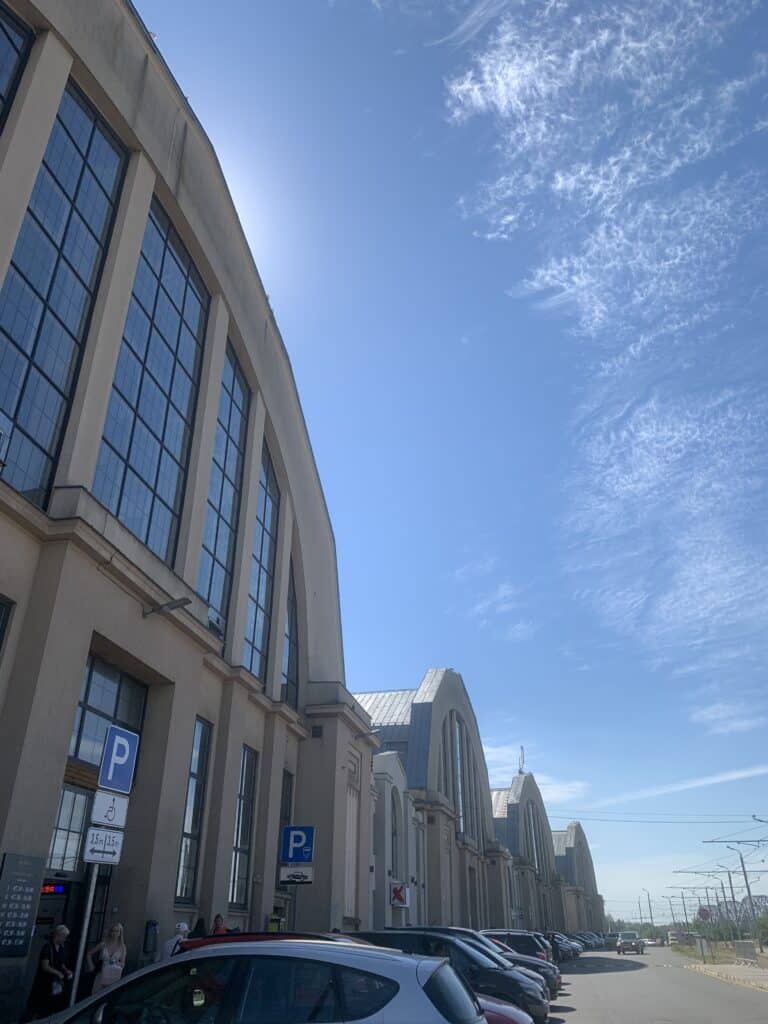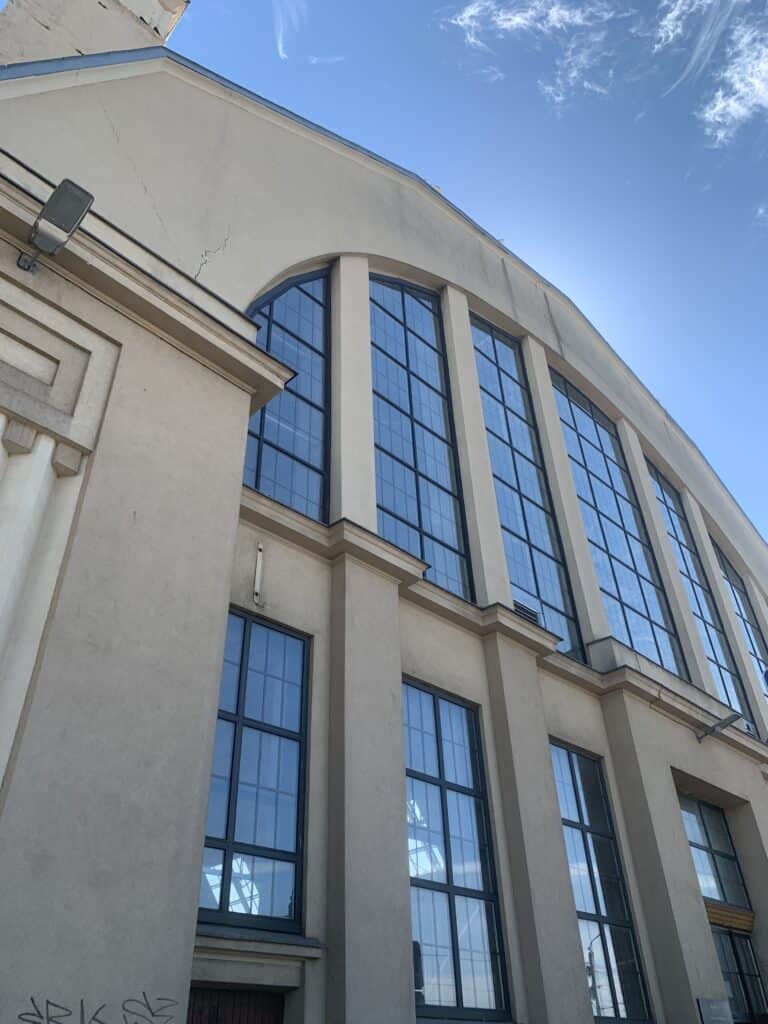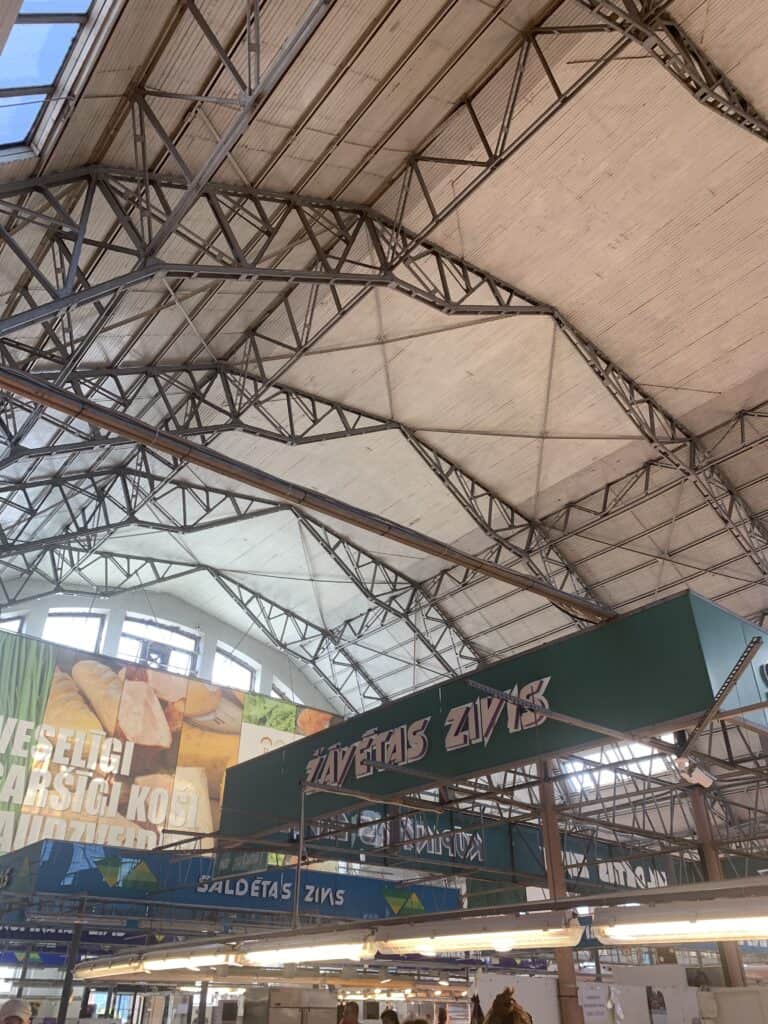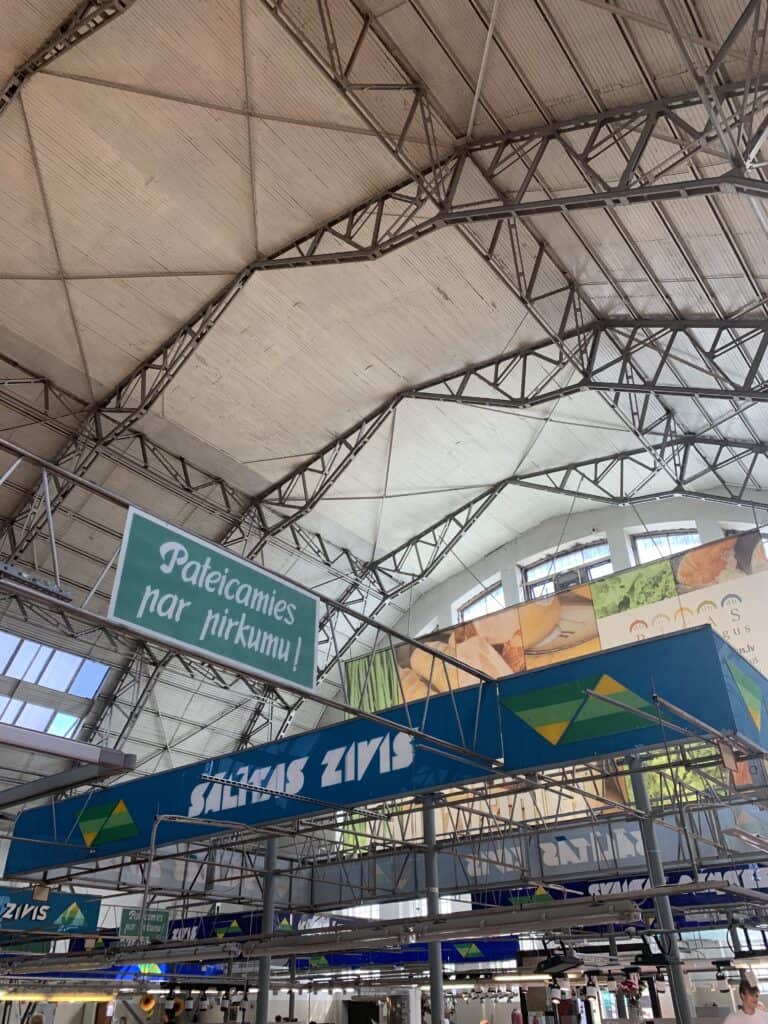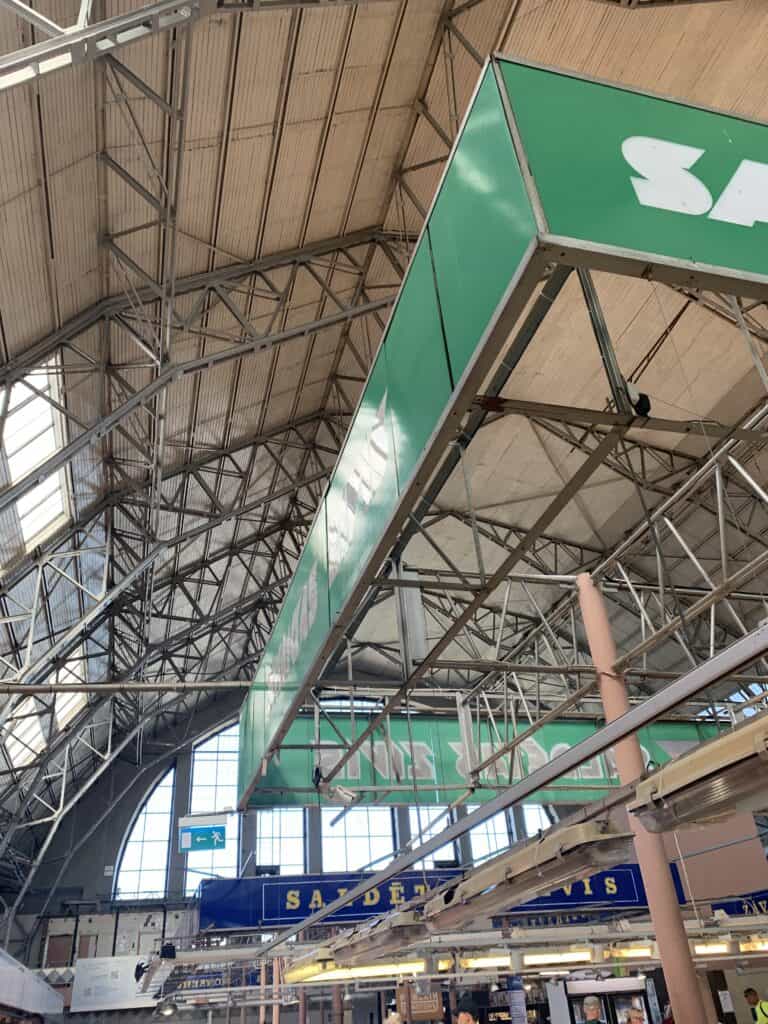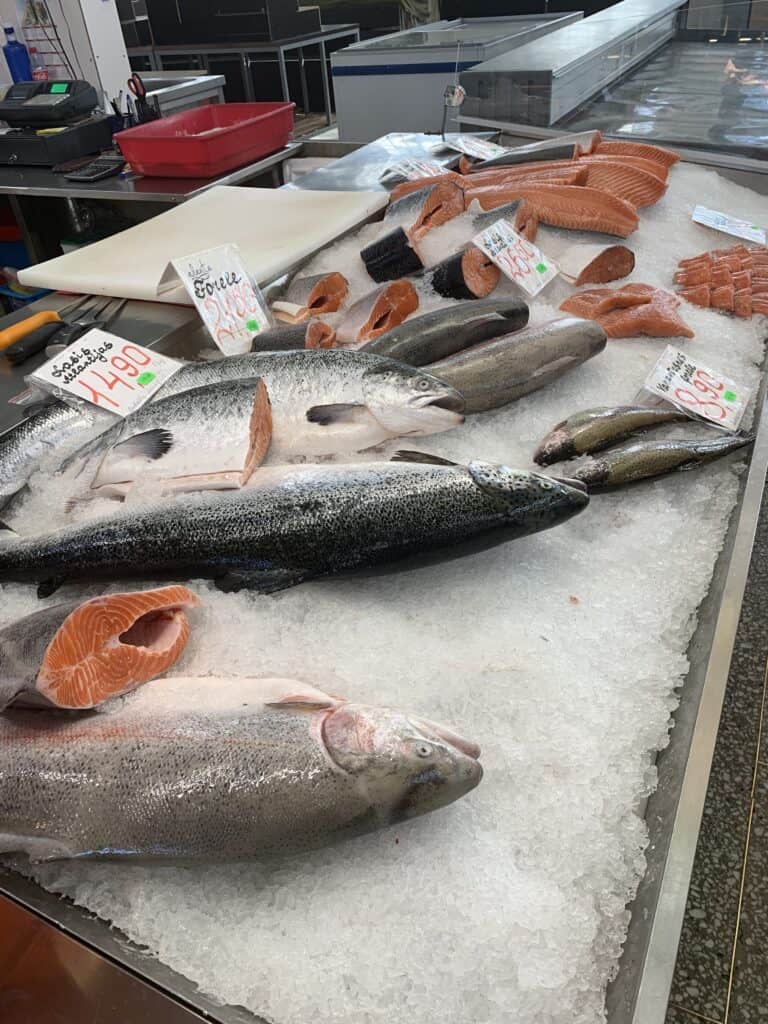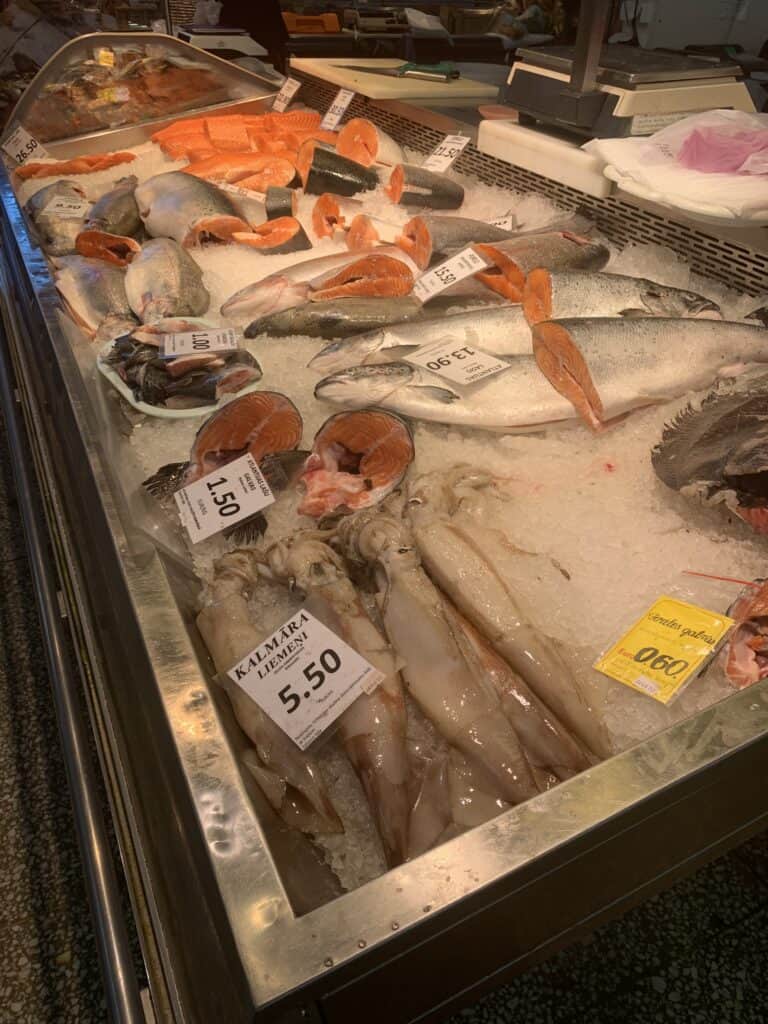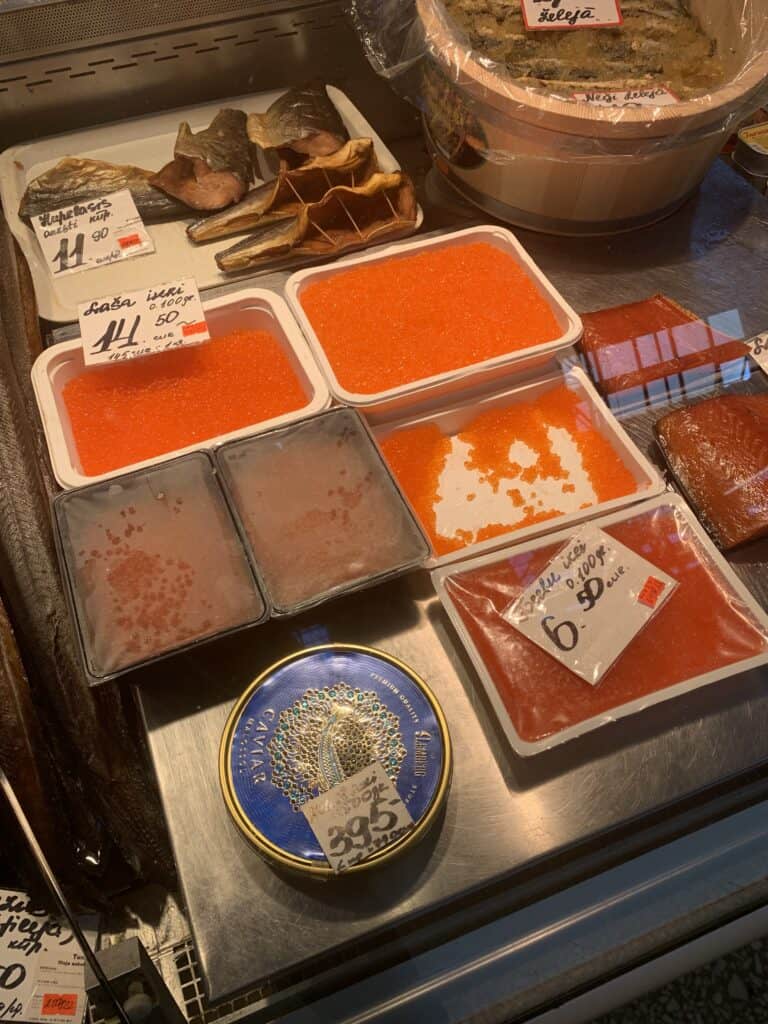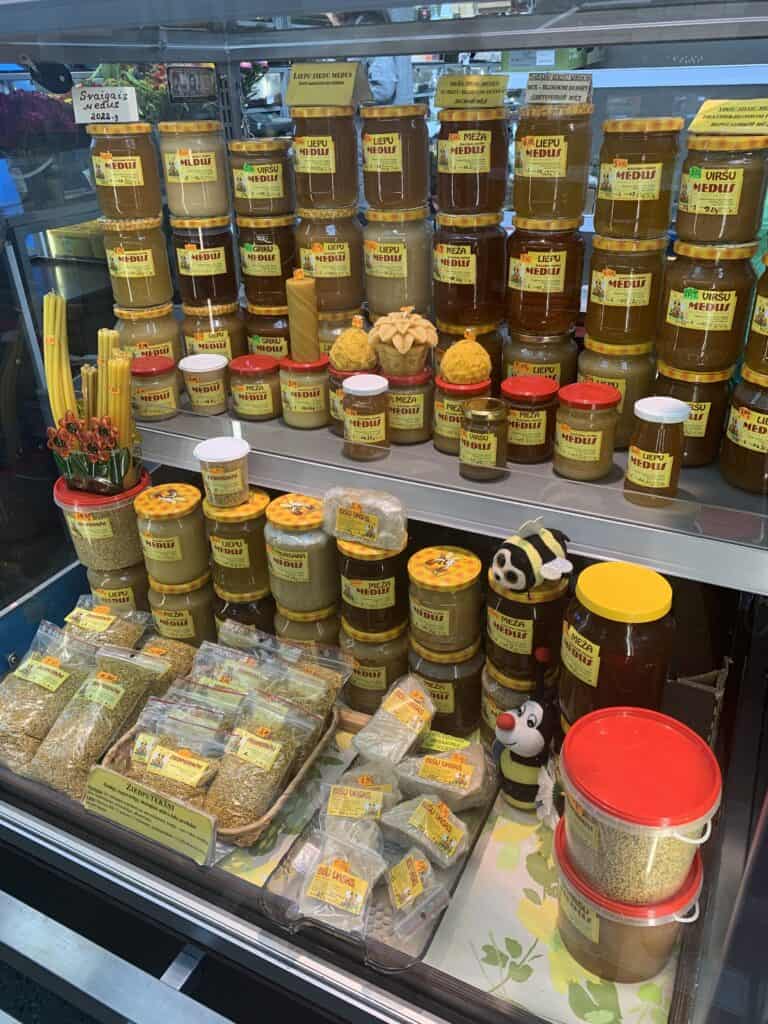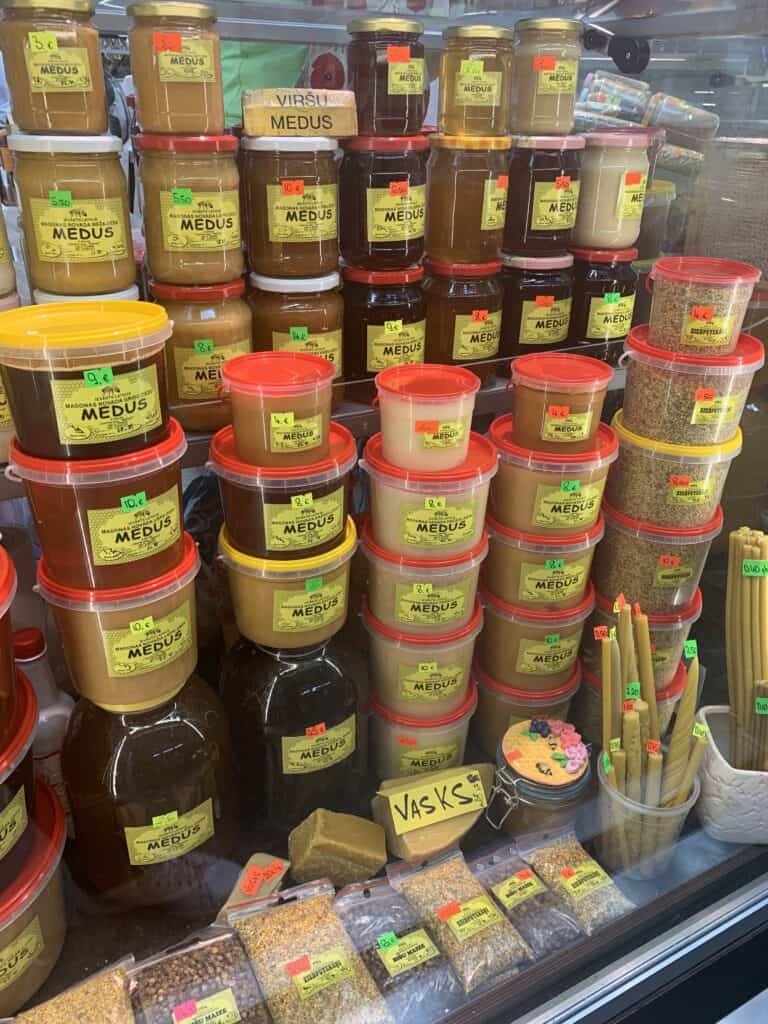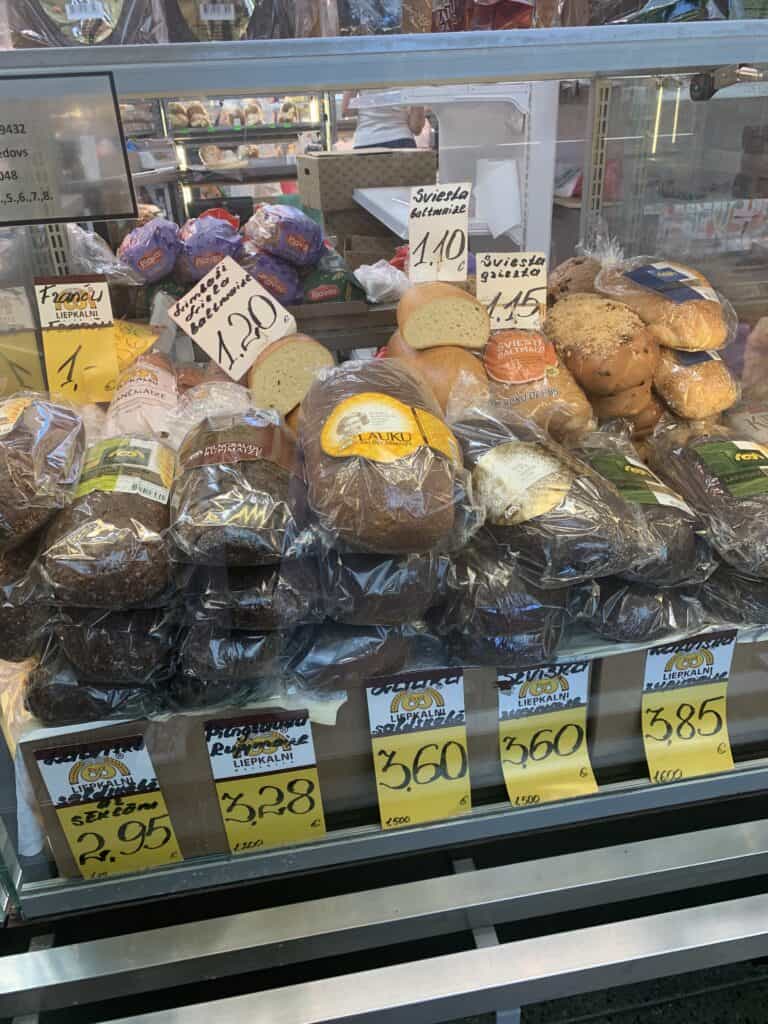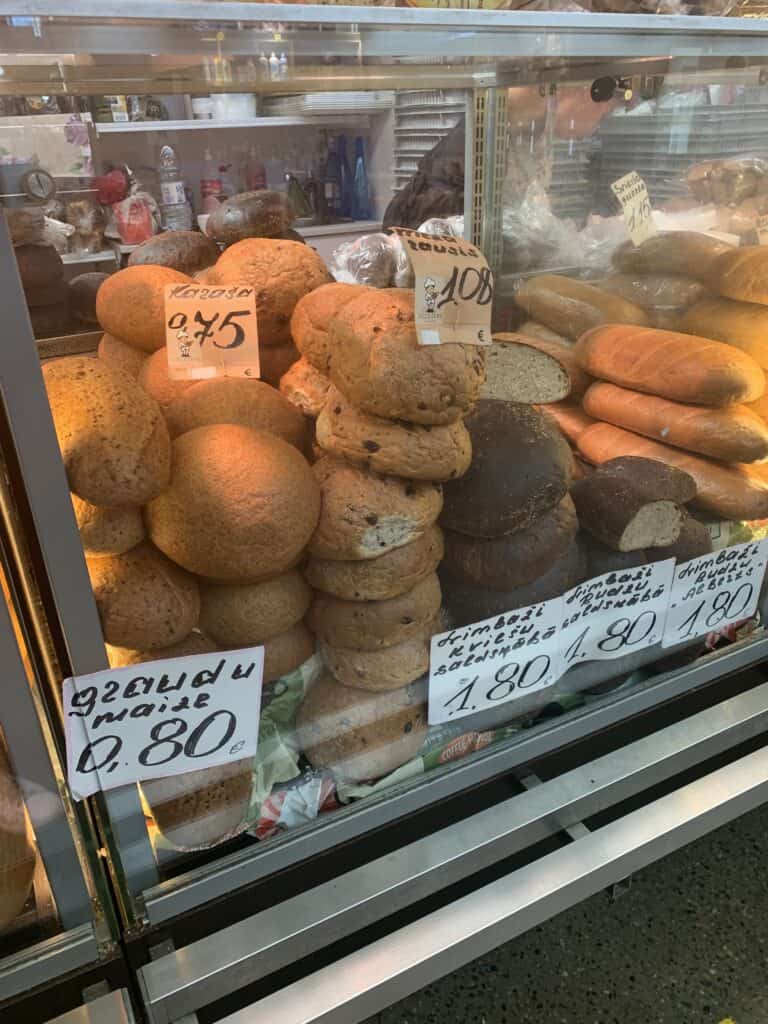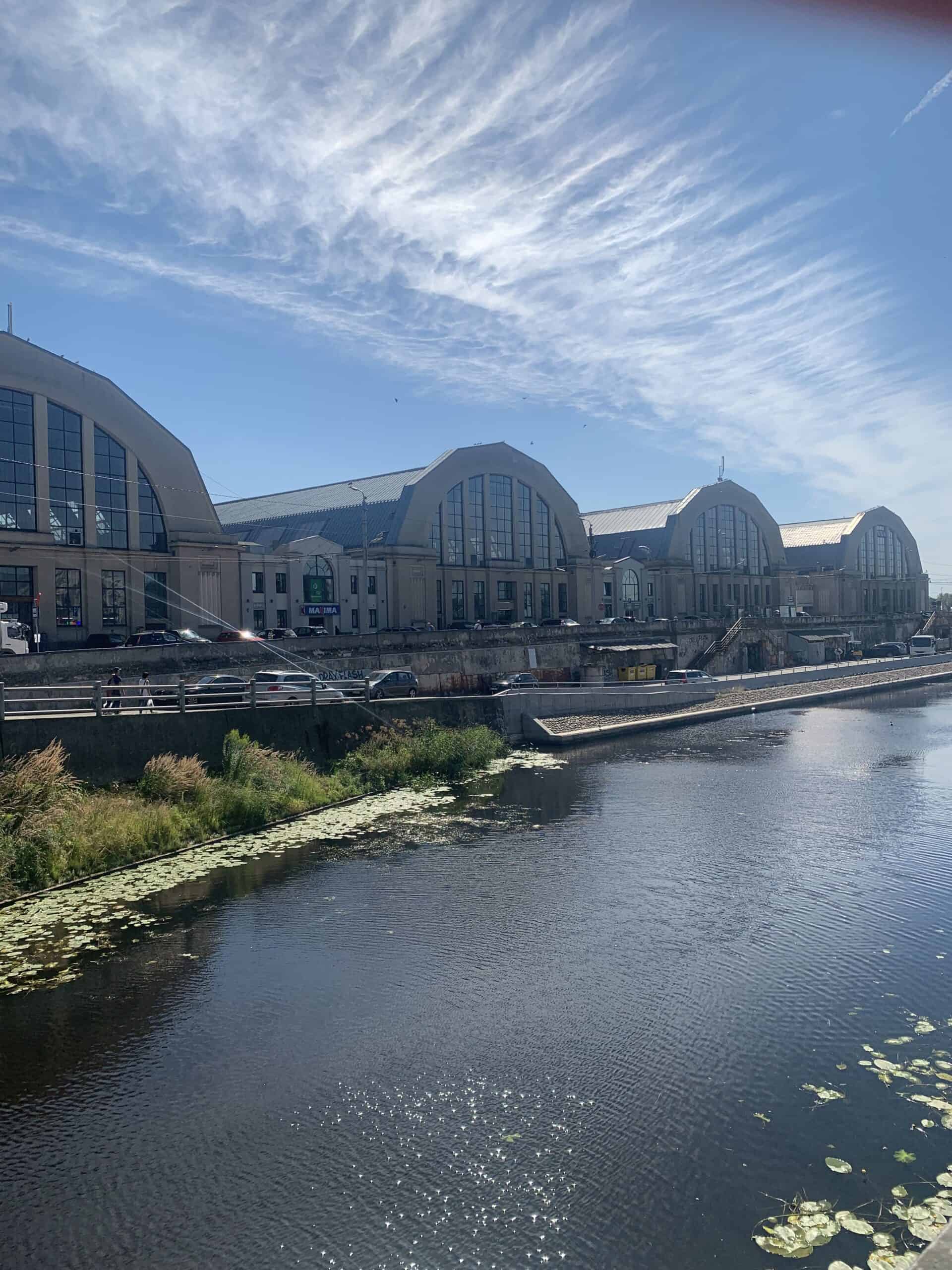
Riga Central Market is one of the largest food markets in Europe. The complex consists of five large pavilions, four of which are connected to each other and connected. The total area of the Market is almost 57,000 m² with over 3000 stands.
Five pavilions each have a specific product: fish, bread, dairy products, meat and typical products. Outside is the open-air fruit and vegetable market. In addition to local products, the Riga Central Market contains numerous imported foods from all over Europe. In the market is also found stalls where accessories, socks, scarves and local handicrafts are sold.
From the mid-sixteenth century, the food market took place along the banks of the Dvina River with wooden stands. This situation turned out to be very unsatisfactory due to poor hygienic conditions and increased traffic.
After the end of the First World War, when Latvia became an independent state, it was thought to improve the situation. The solution was found using the buildings where the Zeppelin airships were kept during the German occupation.
During the Soviet occupation, agriculture in Latvia was collectivized. The halls of the market were renamed “Central Kolchozhallen” where about 60 agricultural collectives sold their products to the population. Unlike many cities in the Soviet Union, the population of Riga was well supplied with food thanks to the market halls.
After the restoration of Latvia’s independence in 1991, the market halls were again populated by private companies from all over Latvia. The central market of Riga is very popular among the population because of its fresh and varied offer and relatively low prices.
Since 1998 the central market and the center of Riga have been included in the World Heritage Sites by UNESCO.

